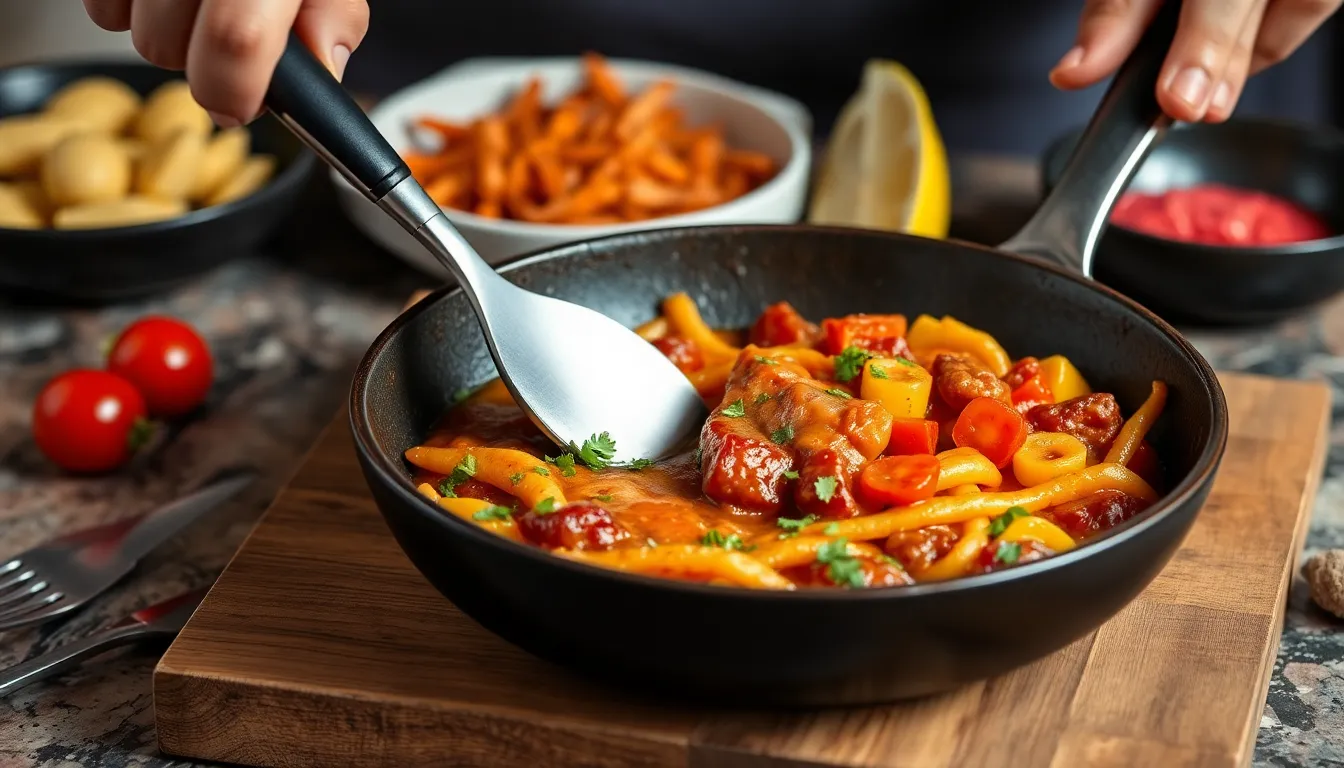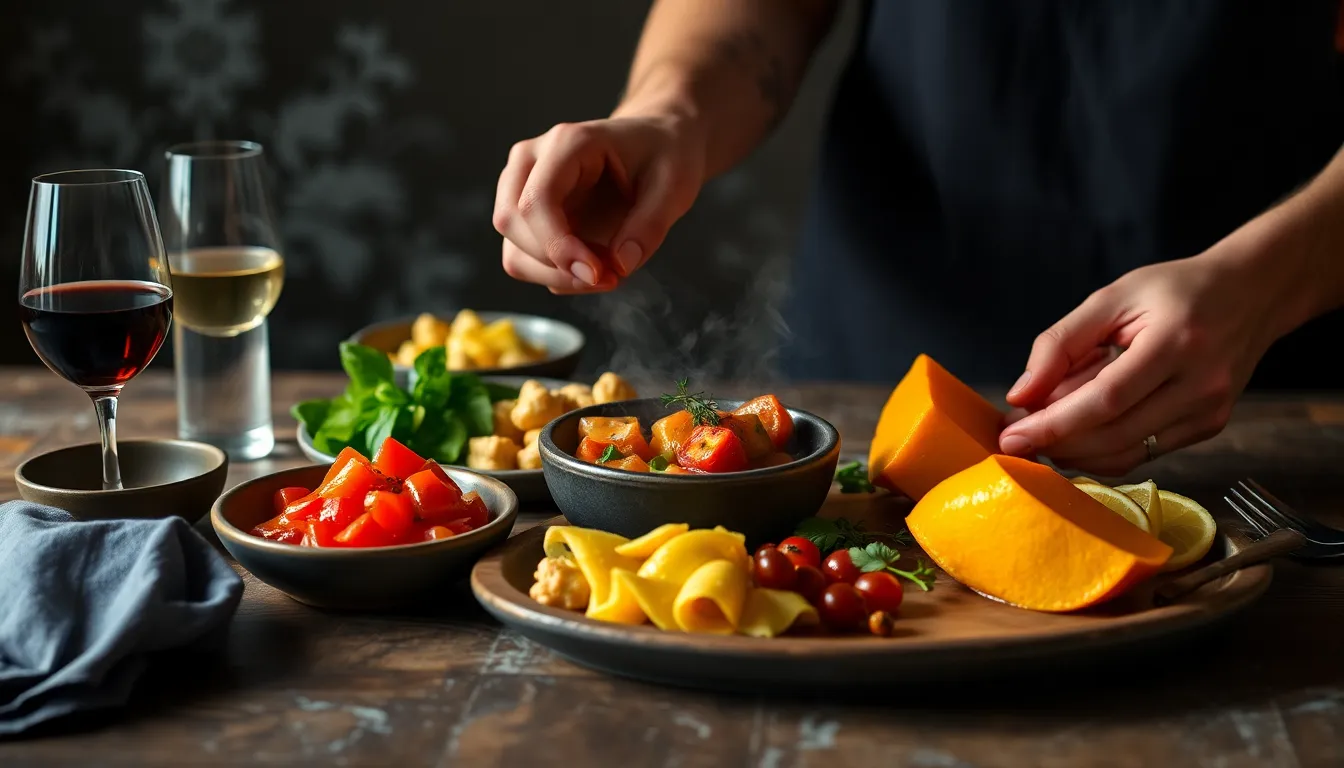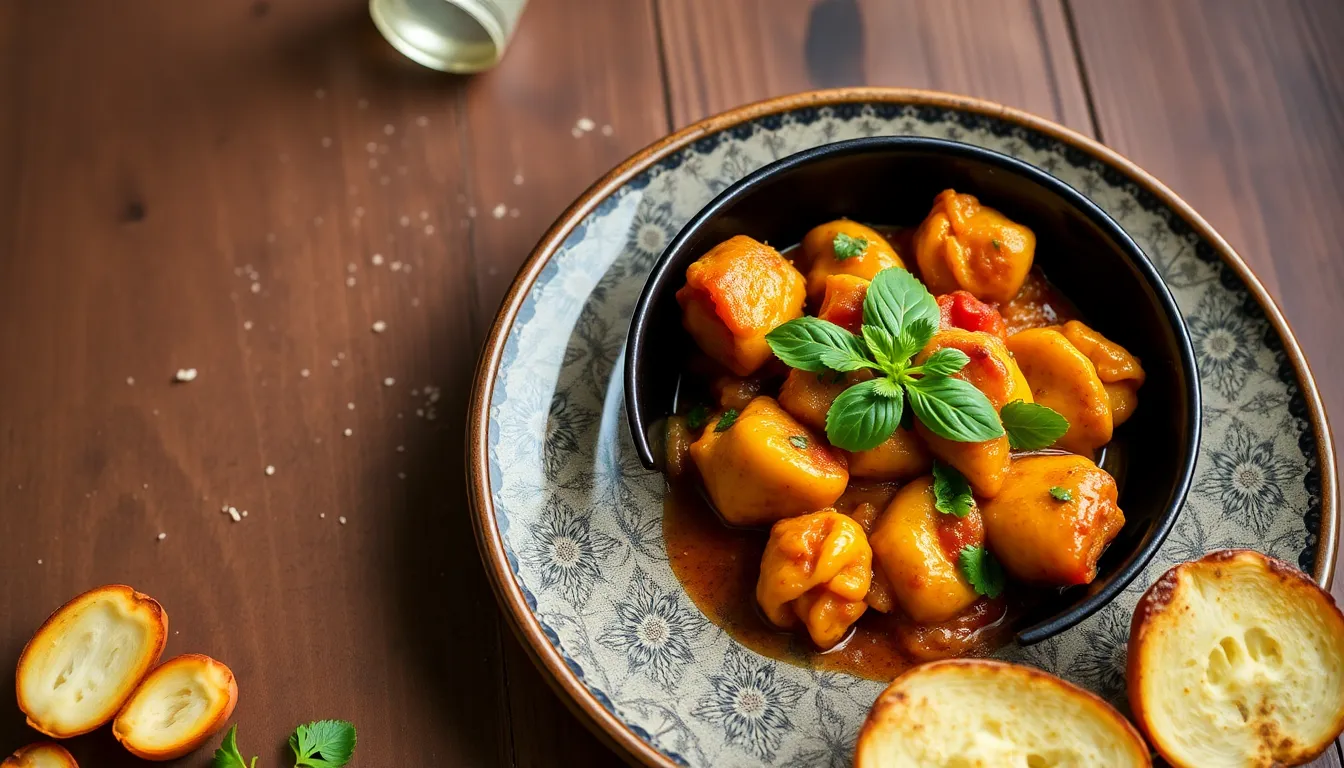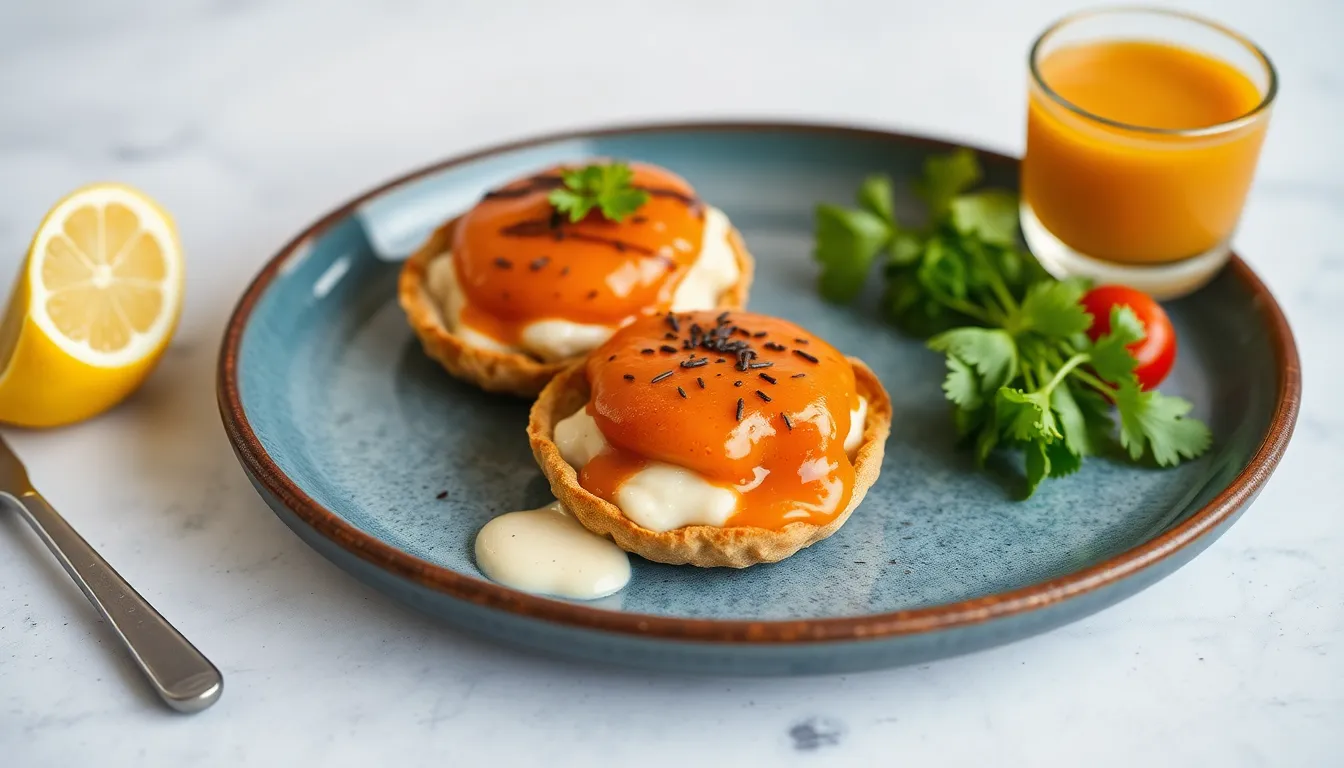Spanish Cooking 101: Essential Techniques Every Home Cook Should Master
Introduction: Unveiling the Heart of Spanish Cuisine
Spanish cuisine is a vibrant tapestry woven from the rich history and diverse cultures that have inhabited the Iberian Peninsula. From the Moorish influences of the south to the Galician seafood traditions of the north, Spain’s culinary landscape is as varied as its regional dialects. The essence of Spanish cooking lies in its emphasis on high-quality ingredients and bold flavors, which are brought to life through essential cooking techniques.
For any aspiring home cook, mastering these fundamental techniques is crucial for creating authentic Spanish dishes that tantalize the taste buds and evoke the warmth of Spanish hospitality. This article aims to provide a comprehensive and accessible guide to these techniques, ensuring that anyone can bring a taste of Spain into their own kitchen.
Section 1: The Building Blocks of Flavor
1.1 Understanding Spanish Ingredients
Spanish cuisine is characterized by its use of fresh, high-quality ingredients that vary by region. Here are some staple ingredients commonly found in Spanish kitchens:
- Olive Oil: The cornerstone of Spanish cooking, used for frying, dressing, and drizzling.
- Garlic: A key flavor enhancer, often used in marinades, sauces, and as a base for various dishes.
- Saffron: This aromatic spice imparts a unique flavor and vibrant color, essential in dishes like paella.
- Chorizo: A spicy cured sausage that adds depth and richness to countless recipes.
- Pimientos: Sweet or spicy peppers used in salads, sauces, and as stuffing.
| Ingredient | Description | Common Uses |
|---|---|---|
| Olive Oil | Extra virgin, rich flavor | Dressings, frying, drizzling |
| Saffron | Aromatic spice, vibrant color | Paellas, stews |
| Chorizo | Spicy cured sausage | Tapas, stews, casseroles |
| Pimientos | Sweet or spicy peppers | Salads, sauces, stuffing |
1.2 The Art of Seasoning
Seasoning is an art that can make or break a dish. In Spanish cooking, achieving a balance of flavors is essential. Here are some key techniques:
- Salt: Enhances the natural flavors of ingredients; use it judiciously.
- Herbs: Fresh herbs like parsley, thyme, and rosemary add layers of flavor.
- Spices: Paprika and cumin are staples that deliver warmth and depth.
Understanding how to layer and balance these elements will elevate your dishes and bring a taste of Spain to your table.
Section 2: Mastering Fundamental Cooking Techniques
2.1 Sautéing: The Spanish Way
Sautéing is a quick and efficient cooking method that highlights the natural flavors of ingredients. Here’s how to do it the Spanish way:
- Heat the Pan: Use a heavy-bottomed pan and heat it until it’s hot before adding oil.
- Use the Right Oil: Extra virgin olive oil is ideal for its flavor and health benefits.
- Don’t Overcrowd: Cook in small batches to ensure proper browning and caramelization.
Popular dishes that feature sautéing include:
- Patatas Bravas
- Gambas al Ajillo (Garlic Shrimp)
- Espinacas con Garbanzos (Spinach with Chickpeas)
2.2 Braising: A Slow Dance of Flavors
Braising is a cooking technique that involves slow-cooking ingredients in a small amount of liquid, allowing flavors to develop deeply. Here’s a step-by-step guide:
- Choose Your Ingredients: Select tougher cuts of meat or hearty vegetables.
- Brown First: Sear the ingredients to develop a rich, caramelized flavor.
- Add Liquid: Use broth, wine, or tomatoes for depth; cover partially.
- Cook Low and Slow: Bring to a simmer and cook on low heat for several hours.
Signature braised dishes include:
- Cochinillo Asado (Roast Suckling Pig)
- Estofado de Ternera (Beef Stew)
2.3 Grilling: The Spanish Barbacoa
Grilling is central to Spanish cuisine, especially in summer gatherings. Here’s an overview:
- Equipment: Use traditional charcoal grills or modern gas grills.
- Marinating: Enhance flavor with marinades that include olive oil, garlic, and herbs.
- Direct vs. Indirect Heat: Use direct heat for quick-cooking items like skewers, and indirect heat for larger cuts.
Popular grilled dishes include:
- Pimientos de Padrón
- Pinchos Morunos (Moorish Skewers)
2.4 Making the Perfect Paella
Paella is perhaps the most iconic Spanish dish, celebrated for its vibrant colors and rich flavors. Follow these tips for a perfect paella:
- Choose the Right Rice: Use short-grain rice like Bomba or Calasparra for optimal texture.
- Use a Wide Pan: A paellera allows for even cooking and the formation of the coveted socarrat (crispy bottom).
- Flavor the Broth: Incorporate saffron and smoked paprika into your broth for depth.
- Don’t Stir: Once you add the rice, avoid stirring to allow the socarrat to form.
Variations of paella include:
- Seafood Paella
- Vegetarian Paella
- Mixed Paella (with meat and seafood)
Section 3: Essential Sauces and Condiments
3.1 The Magic of Sofrito
Sofrito is a flavor base made from sautéed garlic, onions, and tomatoes, essential in a myriad of Spanish dishes. To prepare sofrito:
- Chop Ingredients: Dice onions, garlic, and tomatoes finely.
- Sauté: Heat olive oil in a pan, add onions and garlic, and cook until soft.
- Add Tomatoes: Stir in chopped tomatoes and simmer until thickened.
Sofrito serves as a base for stews, rice dishes, and sauces, providing a depth of flavor that is unmistakably Spanish.
3.2 Creating a Flavorful Romesco Sauce
Romesco sauce is a nutty, smoky condiment that pairs beautifully with grilled meats and seafood. Here’s how to make it:
- Ingredients: Roasted red peppers, almonds, garlic, olive oil, vinegar, and paprika.
- Preparation: Blend all ingredients until smooth; adjust seasoning to taste.
Romesco can be used as a dip, a sauce for grilled fish, or even drizzled over roasted vegetables.
3.3 The Versatility of Alioli
Alioli is a traditional garlic mayonnaise that can be used in various dishes. Here’s a basic recipe:
- Ingredients: Garlic, egg yolk, olive oil, lemon juice, and salt.
- Method: Whisk egg yolk and garlic, then slowly drizzle in olive oil while whisking vigorously until emulsified.
Modern interpretations may include variations with herbs or spices, but the classic version remains a favorite.
Section 4: Putting It All Together: Creating Iconic Spanish Dishes
4.1 Tapas: Small Plates, Big Flavors
Tapas are more than just appetizers; they embody the essence of Spanish dining, promoting social interaction and variety. Here’s an overview of tapas culture:
- Variety: Tapas can range from simple olives to elaborate dishes like patatas bravas.
- Sharing: The communal aspect of tapas encourages sharing and trying different flavors.
- Regional Variations: Different regions offer unique tapas, reflecting local ingredients and traditions.
Here are some classic tapas recipes to get you started:
- Patatas Bravas: Fried potatoes served with a spicy tomato sauce.
- Gambas al Ajillo: Garlic shrimp sautéed in olive oil and served hot.
- Pan con Tomate: Toasted bread topped with ripe tomatoes, garlic, and olive oil.




